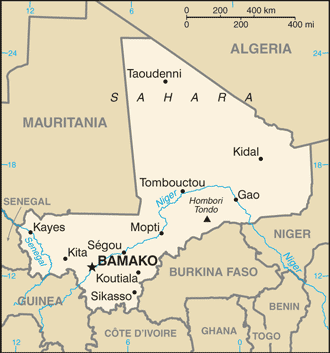Health officials in the west African country of Mali confirmed a single case of Rift Valley fever (RVF) virus infection in a 10-year-old boy from Ouléssébougou.

This case was identified through laboratory investigations into three suspected yellow fever cases. All three samples tested negative for all arboviruses included on the molecular panel, namely: dengue, West Nile, RVF, chikungunya, Crimean-Congo hemorrhagic fever, and Ebola. However, one sample was anti-RVF virus IgM positive on serology testing by ELISA.
Earlier this month, the district rapid response team was deployed to the affected village to conduct outbreak investigation. The team observed that the affected village is served by a large diameter well, with shepherds in seasonal movement with their livestock living nearby and regularly visiting the village.
Score of samples were taken from villagers and domestic animals. Test results are pending.
The World Health Organization says the occurrence of a sporadic case of RVF in a village in Mali is not surprising.
During August-November 2016, communities in the Tahoua Region, Niger (on the border with Mali) experienced an outbreak of RVF. And in January this year, OIE confirmed RVF virus as the cause of abortions in sheep and goats across the border in Menaka, Mali (some 1,700 km from the abovementioned outbreaks).
Nevertheless, the detection of even a single case warrants an immediate emergency response, as such cases are often an early indication of widespread infection in livestock populations, associated with abortions with devastating economic impacts. Though the disease in humans is often subclinical or mild, 8-10% of cases develop severe symptoms, including ocular disease, encephalitis and/or haemorrhagic fever.
Related:




One thought on “Rift Valley fever case reported in Mali”